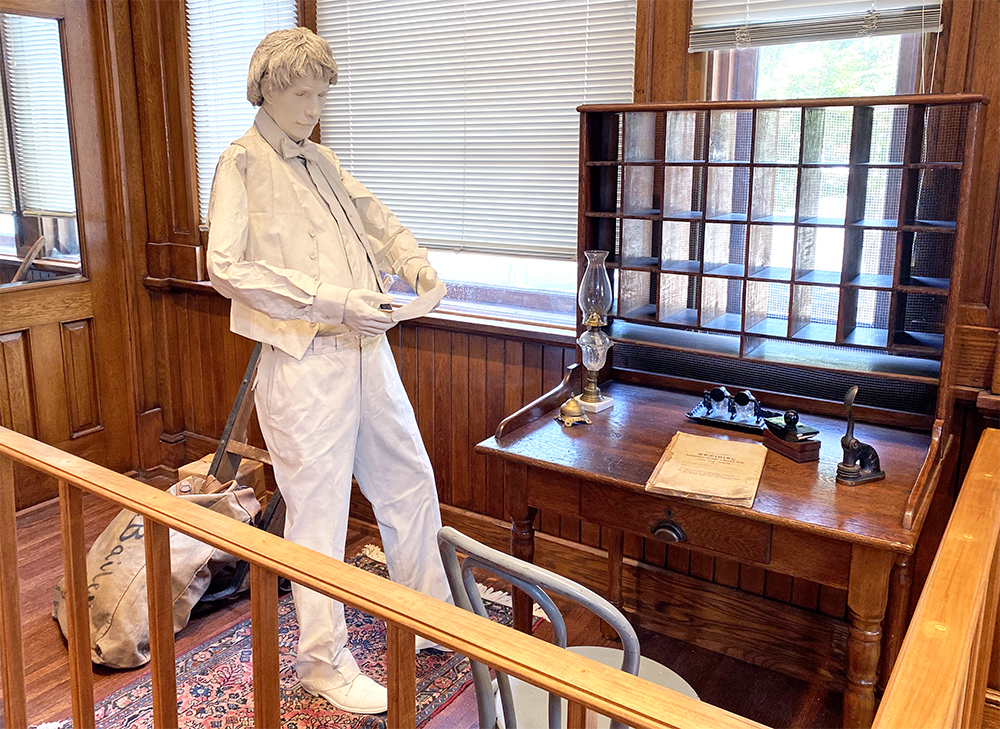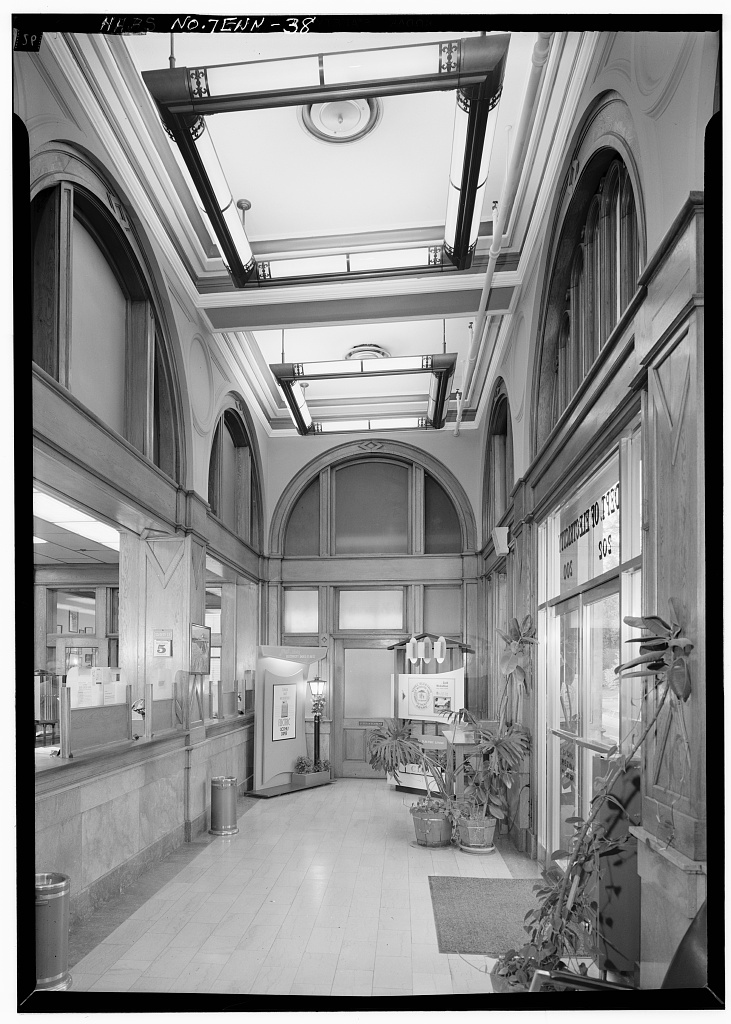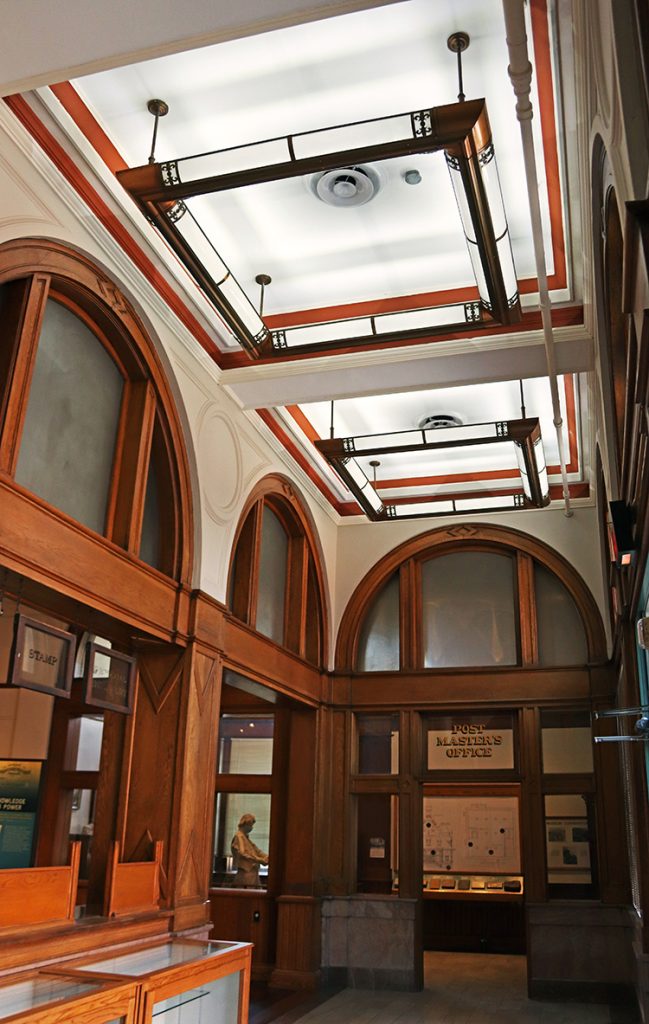
Written by Meghan Gattignolo, Visitor Services Coordinator
A trip to visit the 1898 building of the Museum involves seeing Mr. Bailey, our Postmaster. He stands in the historic Post Office and Customs House of the Museum’s original building quietly sorting mail. When Bailey’s real-life counterpart started work at our Customs House and Post Office, it must have been exciting. The doors opened at a time when the world was picking up traction, recovering from the Civil War, and headed into a whirlwind new century.
In the 21st century, we take for granted how we get news – about our friends, family, our country and the rest of the world. Prior to radios, TVs, computers and the internet, the only way a person could find out about what was going on beyond the bounds of their home was gossip, newspapers and the U.S. Postal Service. The United States Postal Service is a treasured American institution that dates to the earliest years of our country’s history. When the United States Postal Service was established on July 26, 1775, Benjamin Franklin became the first Postmaster General, appointed by the Second Continental Congress, primarily because of his prior experience as postmaster under the Crown’s authority. Before he left the office the following year, he had established unbroken postal routes from Maine down to southern Georgia. Franklin set the precedent of the American postal service as reliable and unitive.
By the late 19th century, the United States Postal Service was a well-worn institution, with several changes and innovations made in how people received mail. Postage stamps were issued starting in 1847, free city delivery began in 1863, and free rural delivery began in 1896. The postal service grew with a growing nation. The United States was becoming an indomitable international presence with the conclusion of the Spanish-American War. Two decades prior, Rutherford B. Hayes laid down the cornerstone to a new federal Post Office and Customs House in Nashville, Tennessee, the first building of its kind in the South, a symbol of post-Civil War unity with the federal government in Washington, D.C.

Nashville Customs House, present day
Our Customs House and Post Office was constructed under this climate, a growing nation with expanding reach. Clarksville had a foothold within the international tobacco trade, even boasting the largest tobacco warehouse in the entire world at one point. Likely, Clarksville needed a large federal building like the one in Nashville, long prior to 1898. Judging by the crowds seen in the picture of the cornerstone-laying found in the postmaster’s office now, the building was a celebrated and welcome addition to the city.

Clarksville Department of Electricity lobby inside the Customs House, circa 1971, photo from Library of Congress 
Customs House 1898 building lobby, 2020
Before the building of the Post Office and Customs House in 1898, mail primarily traveled by railroad, and many Americans received their mail directly from mail cars. Sometimes a community’s mail was handed off to a trusted member of that community. In 1896, the USPS had begun experimenting with free rural delivery, and this likely had some impact on when Clarksville received the post office. Clarksville is the seat of Montgomery County, and in 1898, a much higher percentage of Montgomery County was rural, many farmers providing the tobacco that fed the city’s growth.
Next time you come to visit Mr. Bailey in the Postmaster’s Office, imagine what working in the post office on this corner of Clarksville, Tennessee must have been like when the building was shiny and new. How important and busy the real Clarksville postmaster must have been, serving an expanding community during a time when the US Postal Service was also expanding and changing.
References
http://www.tnmb.uscourts.gov/brief-history-us-customs-house

Meghan Gattignolo
Meghan Gattignolo is the Customs House Museum & Cultural Center’s Visitor Services Coordinator and regularly contributes articles to the Museum’s blog. From a military family, Meghan has spent most of her life in Clarksville. She loves learning about Clarksville’s history and writing. Meghan holds a B.A. in History from Austin Peay State University, with minors in German and Political Science. She lives in Clarksville with her husband and two daughters.
Maegan Collins, Media & Communications Coordinator, prepares photographs and visual images as well as prepares the blog posts for the web.